We spent so much time hiking around Vancouver, Rockies, and Washington state that Britannia Mine Museum is the only museum we have visited during our stay in Vancouver. We noticed it already on our first trip outside the city, but that time we were heading for a hike to Stawamus Chief peaks so we could not stop. As we both like industrial scenery, we knew that we would come back to the mine museum. It turned out that it was almost two months later when we finally had a chance to check that place.
We came back from our trip to the Rockies one day earlier. It was terrible rainy weather in the mountains on Saturday. There was no point to hike. As a result, we ended up in Vancouver already on Saturday evening. Since we had the rental car still for Sunday, we thought this is our chance to see the museum. So far, we visited coal, mercury, amethyst, striped flint, and salt mines, but never in a copper mine, so we didn’t know much about copper ore processing.
The post may contain affiliate links.
Canadian Mining History and Environmental Hazard
We wanted to get to know how the copper mine operates. What attracted first our attention to the mine was the vast, 20-story building of a gravity-fed concentrator for ore processing. It’s called Mill 3 or Concentrator. Standing right next to Sea To Sky Highway is impossible to miss. This building is on the list of National Historic Sites of Canada. The mine started operation in 1900 and about 20 years later became the biggest producer of copper in the whole British Empire and had two settlements for mine workers.
Britannia Beach
One of the settlements, Britannia Beach, remained till the present day. The village was founded where the infamous Britannia Creek reaches the Pacific Ocean (Howe Sound). The creek used to be one of the most polluted waterways in North America due to the mining activity. During the operation, almost 500 kilograms of copper was being deposited into the sound with the contaminated water from the mine. Even when the mine was closed in 1974, the rainwater that kept flowing through the remaining tunnels caused acid rock drainage, and all of it ended up in the Britannia Creek. Only in 2001 treatment plant construction work started. The plant became operational in 2006, and already five years later, fish species that were not present in Howe Sound for years appeared again.
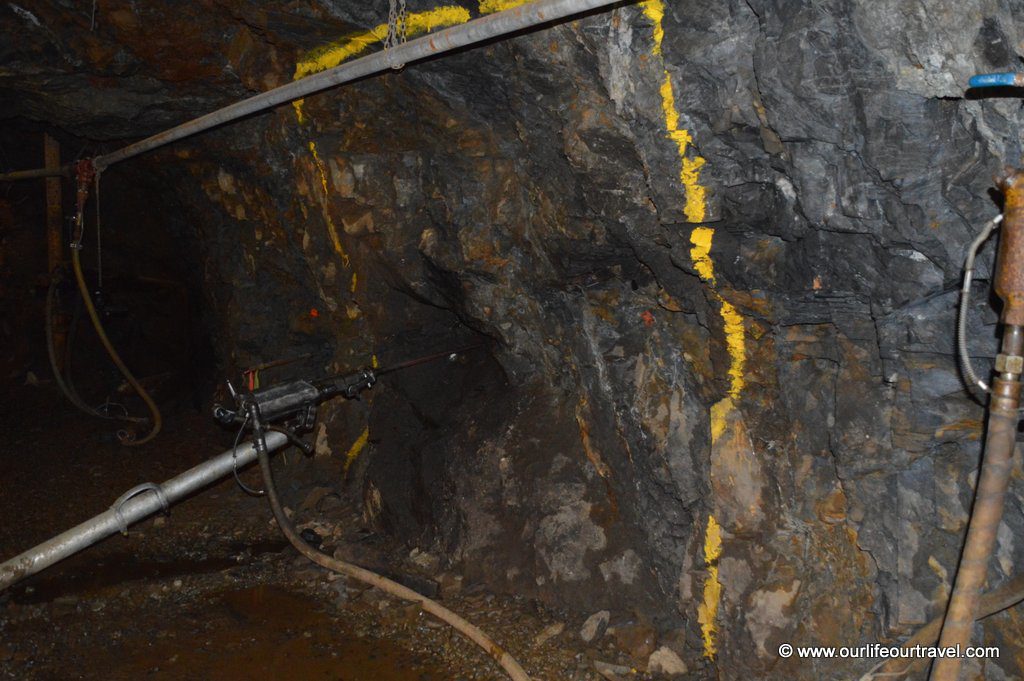
Guided Underground Tour in Britannia Mine
The tour starts with a short mine train ride underground. It’s concise, but you can see some blue spots on the walls indicating that copper ore is still here in the rock. After getting off the train, the walk leads through few corridors in the mine. There is some mining equipment on display and tour guide uses some of it—at least some demonstration, not real digging work. Also, as in probably every mine tour, we experienced how dark it is when electric lights are off. This moment we saw for the first time how carbide lamp works. Probably that was the most exciting point of the underground tour.
The other part we enjoyed was the sound of the mine whistle. It was used to signal if there was an emergency inside the mine, and rescuers were needed. It’s deafening! The whistle is right next to the place where we left the tunnel. And that concluded the underground tour. It was concise, especially if you think that the mine has 210 kilometers of tunnels, and its longest tunnel is 16 km long.
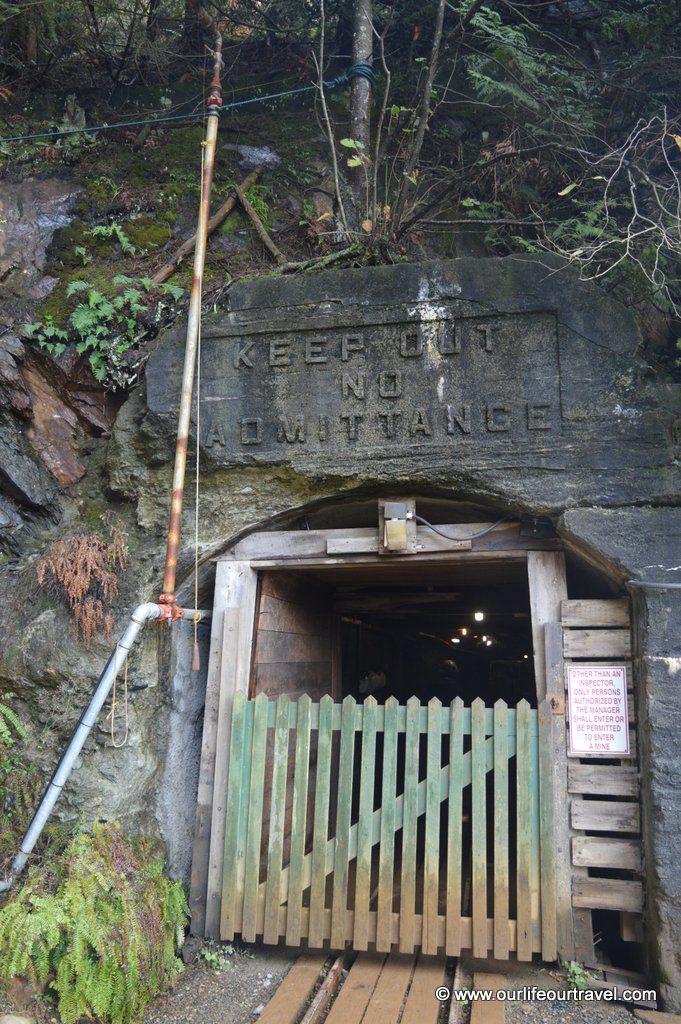
Exploring the Old Buildings
Then we headed down to the main building, the Mill 3. The mine needed a new mill to make the processing of the ore more efficient. It is an impressively huge building, especially when you enter inside of it. Unfortunately, we could only explore the ground floor of it and could not venture up the stairs to the top like workers of the mill did every day. The guide explained the process of extracting copper powder from the ore. The description of the operation concluded the tour, but we could now freely walk around the building of the mine.
That was an excellent time to get to know more of the history. There is a lot of beautiful informative boards. The most interesting for us was A to Z exhibition. It shows the history of the mine and the people who worked for the company. The exhibit is in a building that used to house offices of clerks and management of the company.
The most exciting part of the visit was actually to get to know the history of the people who worked for the mining company and lived in the mine settlements. The settlements were isolated. Britannia Beach is nowadays accessible by road from Vancouver, but this was not the case until 1956. Before that, the only way to reach the settlement was by sea. The second mine settlement was up in the mountains, making it even more secluded. Only people working with the company could stay in the colonies. The exhibit shows nicely the history and everyday life of the workers that were a mix of different nations and cultures.
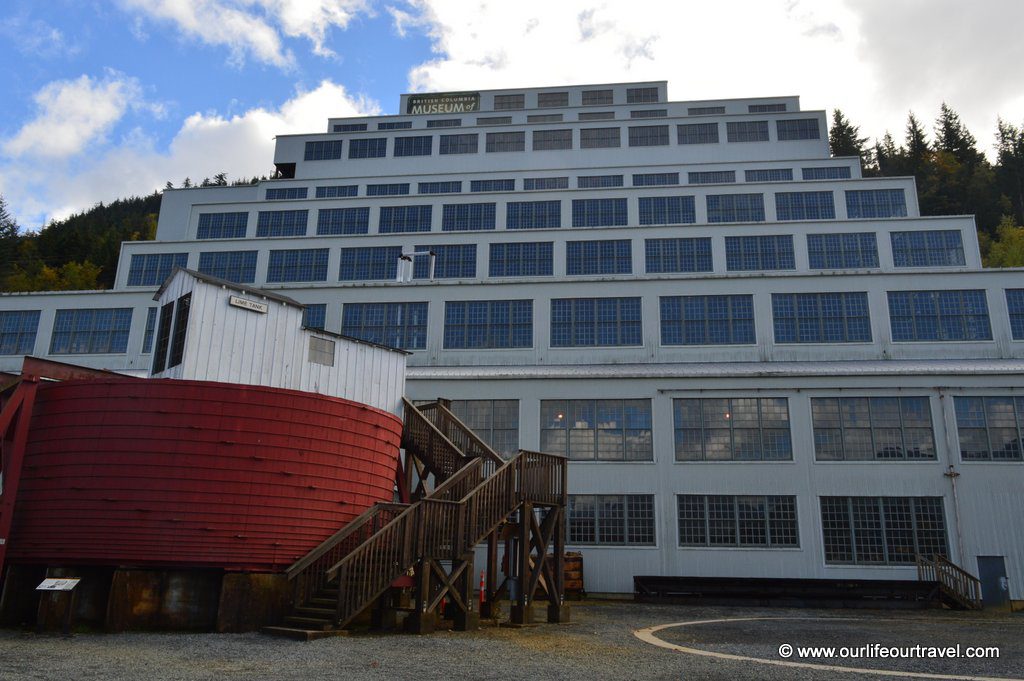
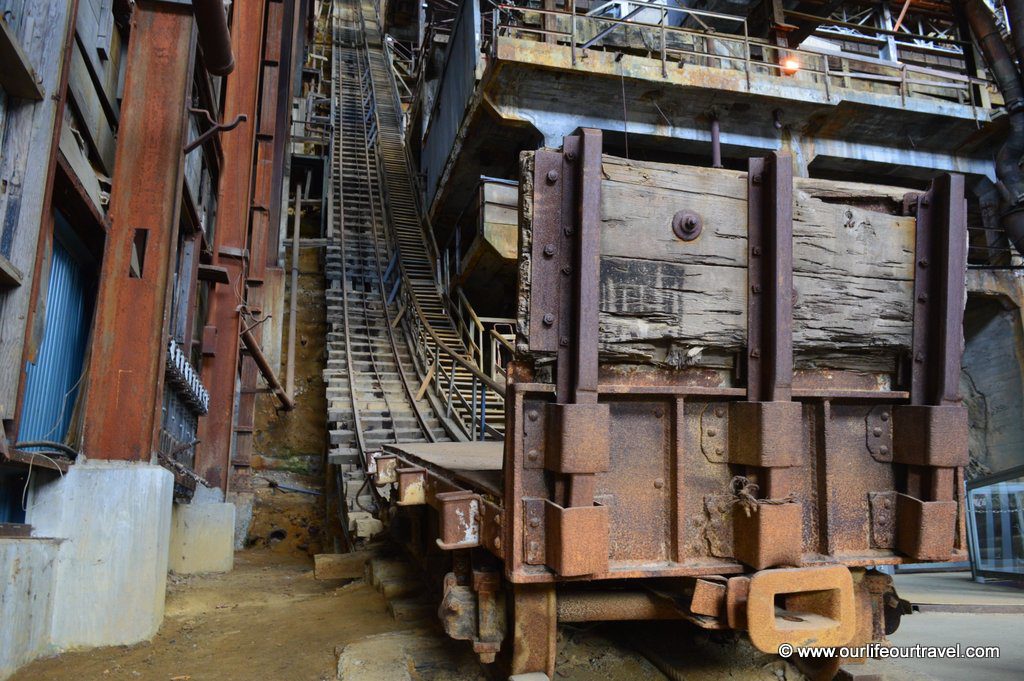
After visiting the mine buildings, we headed towards the exit, but we had to stop on the way for a picture with a big haul truck. That was, in fact, another thing apart from the mill building that attracted us to visit the mine.
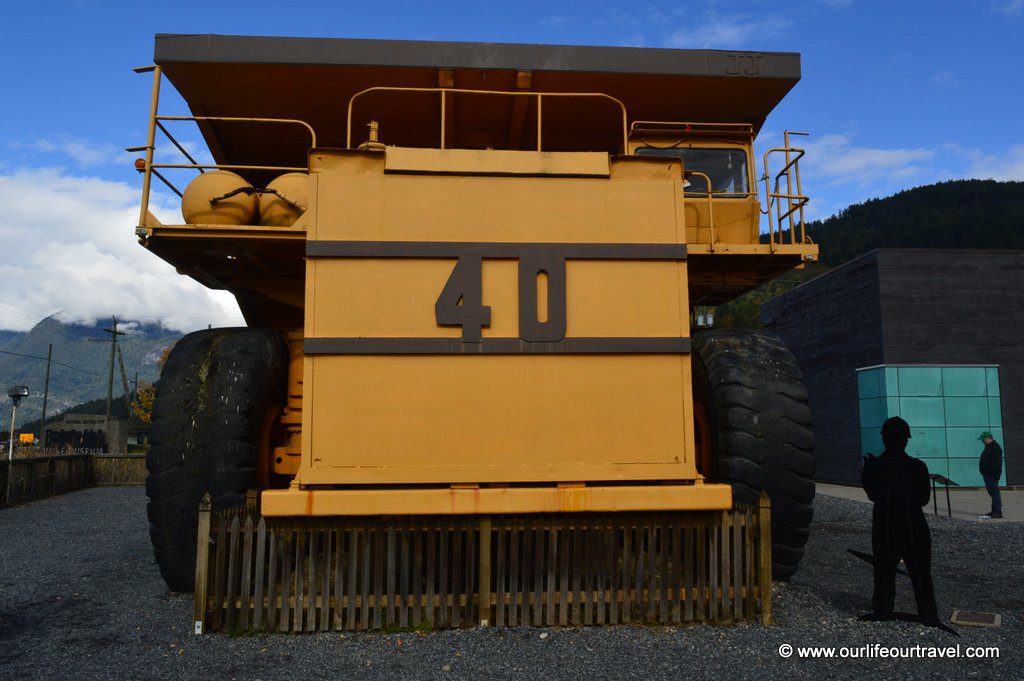
Since the rocks in the mine contain not only the ore but also some gold, the museum offers a possibility to try your skills in gold panning. All in all, a place worth visiting! A bit expensive for the price of admission, though, but as you could imagine maintaining the mine and keeping it accessible for tourists and not letting it deteriorate costs. Probably children enjoy the visit to the mine much more than we did, especially the underground part with a lot of machinery. On the other hand, exhibits in the mine buildings outside are more suitable for adults as there is quite a lot of text. Gold panning is the only part offering more interaction.
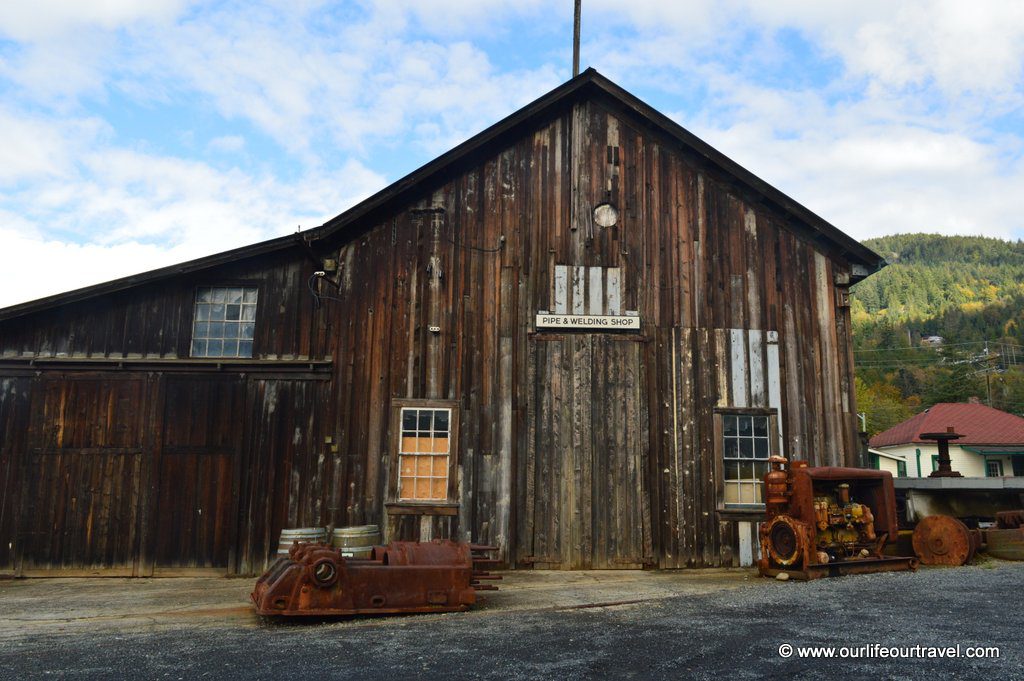
After or Instead of the Visit
If you cannot visit the mine, watch X Files where the mine appears in a few episodes. One of the Scooby-Doo movies features it too! And on the way back to Vancouver, go the first few kilometers to Squamish direction. You can check Shannon Falls and enjoy outdoor lunch with a view of the waterfall.
How to Get too Britannia Museum Vancouver
The most straightforward approach is driving from Vancouver by car to the Mining Museum. It is 50 kilometers away from our favorite Canadian city and takes about 40 minutes to get there.
Britannia Mine Discount Coupons and Tours
Look for discounted tours on GYG to the Museum or combined experiences with visiting the Horseshoe Bay, Shannon Falls, and experience the Sea to Sky Gondola.
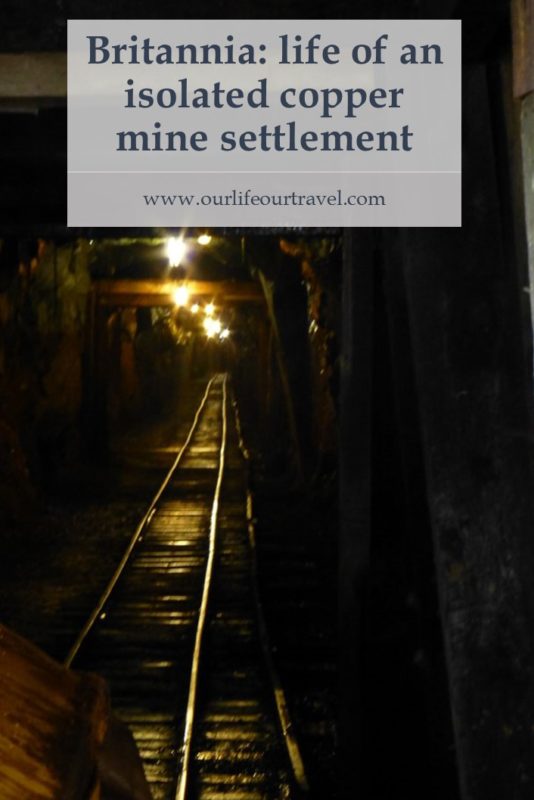
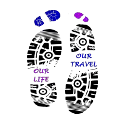
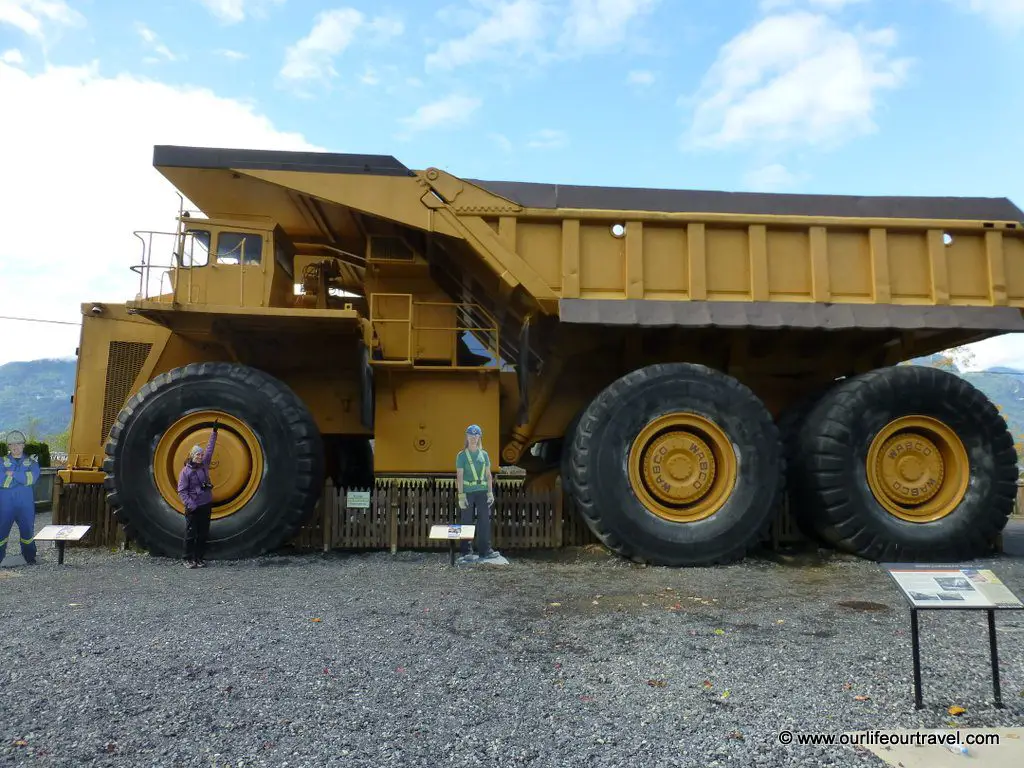
Copper mining is so impressive, especially considering the limited technology they used. What a cool tour to step back in time and see how it operated! Did you try panning for gold while you were there?
Life must have been tough in the old days. The mine does look rather spooky. I love exploring old mines as they are full of history and interesting stories.
Hehe I’m from Vancouver so I’ve heard a lot about this place. it’s actually where many kiddies do “educational” field trips, but somehow I’ve never been. Like you said, the pricetag is kind of high so I think that’s what has held me back. Good to see you had a nice time! Maybe one day I’ll check it out 🙂
This is so cool–I’m really interested in this kind of thing as well. I was in Kutna Hora, Czech Republic last month and tried desperately to visit the silver mine there but tours had sold out so I missed out on it. I had no idea this sort of thing existed in Vancouver!
Whoa, super neat! I bet that train ride was really interesting and fun! Too bad you don’t find your price of admission in that gold panning!
I don’t know who will enjoy this more, my kids or me. Seems really fun especially with all the big trucks. Have to agree with what Gareth (yes I read comments too) that it might get a bit claustrophobic but I think if I go as a tour group, it should be okay.
As something of a history buff, this tour seems right up my alley. That being said, my inner claustrophobic might not agree! Nevertheless, the tour looks like a really great insight into the lives of men who did an extremely important job and one that few of us would consider doing today. Great read and thoroughly enjoyed
What an interesting museum! It’s cool that you’re able to actually get a tour inside the mine and get a sense for what it would have been like to work there. I’ve never heard of this museum so it’s good to have on my radar for a future trip to Vancouver!